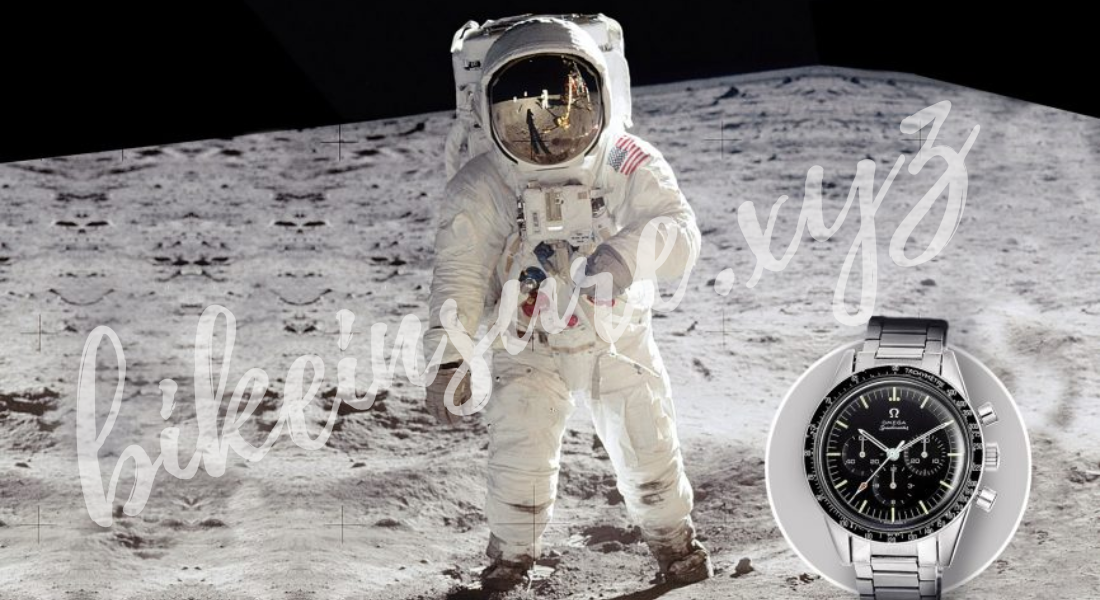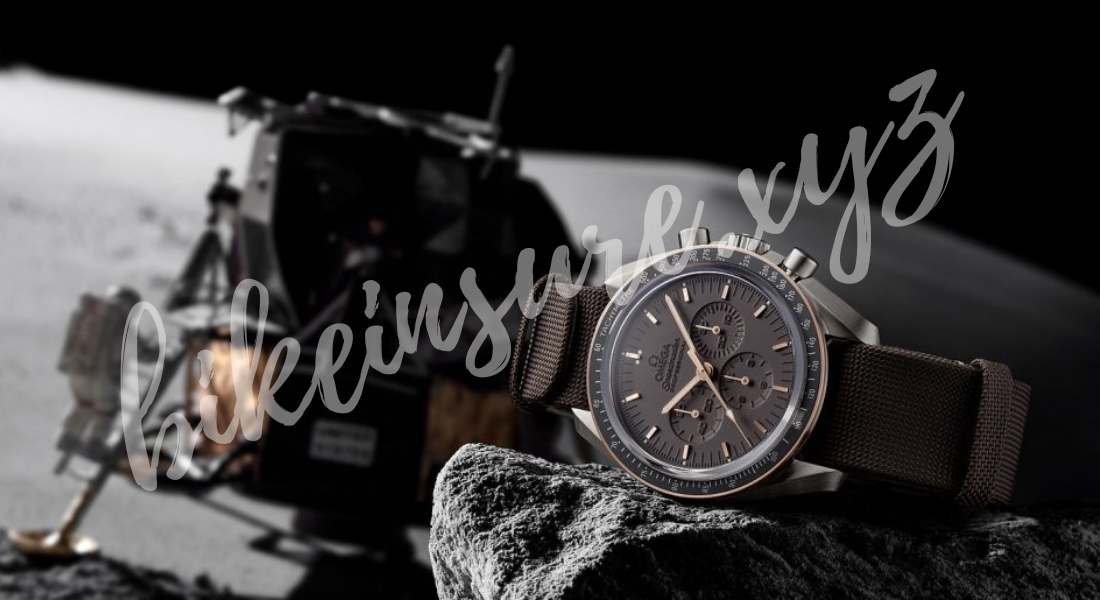
Introduction
Omega, the Swiss watch brand, holds a legacy in space exploration that is both iconic and enduring. Known for its dedication to precision and innovation, Omega has made critical contributions to numerous space missions, earning recognition as the first watch on the Moon. From the Apollo missions to modern-day space travel, Omega’s timepieces have served as essential tools for astronauts, facing the ultimate test in the harsh environment of space. In this article, we explore Omega’s journey in space exploration, examining its evolution and its contributions to space missions.
Omega’s Journey into Space
Omega’s journey into space exploration began in the early 1960s when NASA sought a reliable timepiece for its astronauts. NASA required a watch capable of withstanding the intense demands of space, including zero gravity, extreme temperatures, and high-pressure conditions. After rigorous testing, Omega’s Speedmaster outperformed other brands and models, leading NASA to designate it as the official watch for its astronauts.
The Omega Speedmaster: A Timeless Icon
The Omega Speedmaster, now affectionately known as the “Moonwatch,” became a permanent fixture in space missions after passing NASA’s stringent tests. Its reliability and functionality in extreme conditions made it an invaluable tool. The Speedmaster not only kept time but also allowed astronauts to measure critical events such as fuel burns and other precise timing needs.
During the Apollo 11 mission in 1969, Omega cemented its role in space history. Both Neil Armstrong and Buzz Aldrin wore the Speedmaster as they took their first steps on the lunar surface. Aldrin’s Speedmaster marked the first watch worn on the Moon, solidifying Omega’s place in history.
Innovations for Space Travel
Omega’s dedication to advancing its technology didn’t stop with Apollo. Over the years, Omega has continued to innovate, addressing challenges that come with space travel. This commitment to improvement has made Omega’s role in space exploration significant, especially as space missions have evolved in complexity.
- Durability and Precision: Omega designs its watches to withstand extreme environments, from the intense vibrations during launch to the freezing temperatures of space. The Speedmaster, in particular, is engineered for durability, using materials like Hesalite crystal, which remains resilient even under sudden impacts.
- Reliability Under Pressure: In space, where timing errors can lead to catastrophic consequences, Omega’s watches provide unmatched reliability. Omega continually refines its movements to ensure precision, reliability, and power reserve, maintaining consistency even in microgravity.
- Anti-Magnetic Innovations: Space exploration exposes watches to high levels of magnetic fields. Omega integrates anti-magnetic materials into its watches, ensuring resistance to these fields without compromising performance.
Omega and the Apollo Missions
Omega’s role in the Apollo program highlights its adaptability in meeting the stringent demands of space missions. During the Apollo 13 mission, the Speedmaster played a pivotal role. When an oxygen tank exploded, endangering the spacecraft, astronauts relied on their Speedmaster watches to time critical maneuvers that ultimately led them back to Earth. This lifesaving performance earned the Speedmaster the prestigious “Silver Snoopy Award,” a NASA accolade recognizing contributions to successful human space flight missions.

Omega’s Continued Influence in Modern Space Exploration
Today, Omega’s contributions to space exploration continue through collaborations with various space agencies and astronauts. With missions extending to the International Space Station (ISS) and beyond, Omega’s technology adapts to new challenges, ensuring its watches remain valuable tools for today’s astronauts.
The Speedmaster X-33, designed specifically for space missions, features both digital and analog displays, making it one of the most advanced watches for astronauts. It includes functions like mission elapsed time, countdown timers, and alarms, tailored to the needs of space travel. This innovation reflects Omega’s commitment to staying at the forefront of technology while honoring its legacy.
Why Omega Remains the Preferred Choice in Space
Omega’s history with space exploration rests on several pillars that continue to make it a preferred choice for astronauts and space agencies alike. Here’s why Omega remains integral to space missions:
- Proven Performance: Omega’s watches consistently demonstrate reliability under extreme conditions. This track record has built trust among astronauts and mission planners.
- Cutting-Edge Materials: Omega invests in advanced materials to enhance durability, including anti-magnetic alloys and high-grade stainless steel. Which withstands rapid temperature changes and pressure variations.
- Continued Innovation: Omega remains dedicated to refining its technology and design to meet the evolving needs of space missions. From mechanical watches to digital-analog hybrids, Omega has expanded its range while maintaining functionality and precision.
The Impact of Omega’s Role in Space Exploration on Popular Culture
Omega’s involvement in space exploration has transcended the realm of watchmaking, influencing popular culture and solidifying the brand as an icon. The Speedmaster’s association with the Moon landing has inspired numerous limited editions and tributes, capturing the imagination of watch enthusiasts and space fans alike.
Omega’s “Speedy Tuesday” campaign on social media, launched in 2012, helped a new generation of fans appreciate the Moonwatch’s heritage. This campaign has built a community of enthusiasts who celebrate Omega’s role in space exploration, and Omega continues to release commemorative editions that honor this legacy.
Omega’s Legacy and Future in Space
As private space exploration gains momentum, Omega remains a prominent player, with potential collaborations extending to new agencies and commercial space companies. The prospect of lunar bases, Mars missions. And extended space tourism could open new opportunities for Omega to contribute its technology to the next generation of space exploration.
Omega’s role in space exploration goes beyond watchmaking; it represents a commitment to pushing boundaries. The brand’s vision aligns with the spirit of exploration and discovery, driving it to produce watches that meet the rigorous demands of space missions. As we look to the future, Omega’s contributions to space exploration will likely evolve. With new innovations tailored to the challenges of deep space and interplanetary travel.
Conclusion
Omega’s role in space exploration stands as a testament to its precision, durability, and innovation. From the Apollo missions to today’s space endeavors, Omega watches serve as more than just timekeepers—they’re vital instruments for survival and navigation. Omega’s legacy intertwines with the history of human space exploration, and its dedication to advancing watchmaking technology ensures it will remain a trusted companion for astronauts and adventurers alike. Omega’s journey in space is far from over, and as we anticipate new discoveries. Omega is poised to remain an integral part of humanity’s exploration beyond Earth.
Leave a Reply